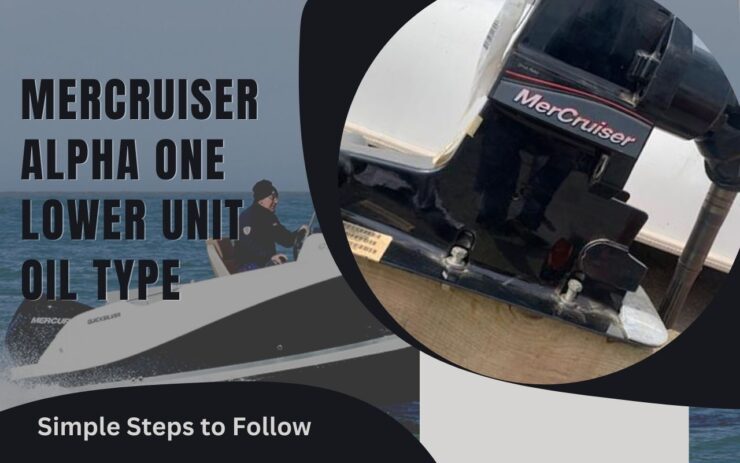The Mercruiser Alpha One outdrives lower unit gear case oil plays an essential role. Proper oil level and quality ensure lower transmission gears spin freely and smoothly, without friction.
Any deviation from the provided quantities may indicate a servicing technique or a more serious problem.
How to check Mercruiser alpha one lower unit oil type?
You can use any lubricant with an API GL5 SAE 80 or 90 weight grade rating for Alpha One lower unit.
For changing the oil, first, adjust your engine position. Remove the plug. Refill the oil and check if there is any metal reflection. Lastly, reinstall the plug and insert the drain stopper.
Stay tuned to learn more!
Table of Contents
ToggleMerCruiser Lower Unit Oil type
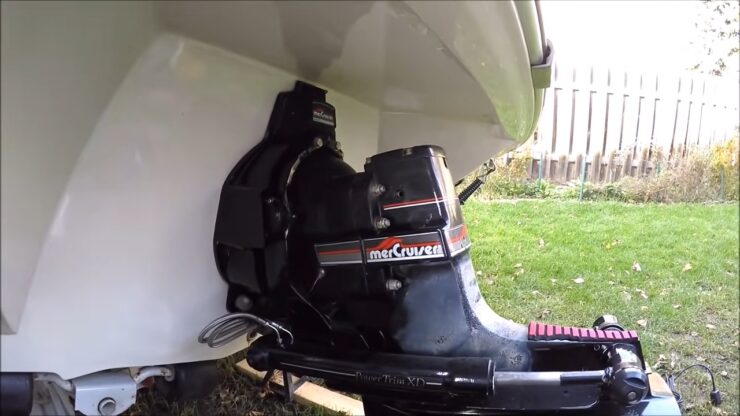
The oil in the lower unit gear case serves as a cooling agent, preventing overheating of the components. Any lubricant with an API GL5 SAE 80 or 90 weight grade rating can be used.
Make certain that you don’t combine different types of weights of oil. Sincerely, into the LOWER drain hole. Slowly squeeze the container to drive the oil into the lower part of the machine.
It is possible to employ a semi-synthetic blend of 80/90 weight. In order to meet these requirements, Mercury Marine Precision Oils are designed specifically for marine engines.
Please visit your local marine shop for more information on this product. Quicksilver from Walmart is an option you might wish to consider.
Oil Change Kit for Mercruiser Alpha One Gears
Things to look for when checking the lower unit gear oil on a MerCruiser Alpha One
- High-Performance Gear Lube 2 liters
- Screw washer seals for drain screws, two per package
- 1 × Pump for Lubricating Gears
- Alpha One 1983-90.
- The Alpha One GEN – II and up.
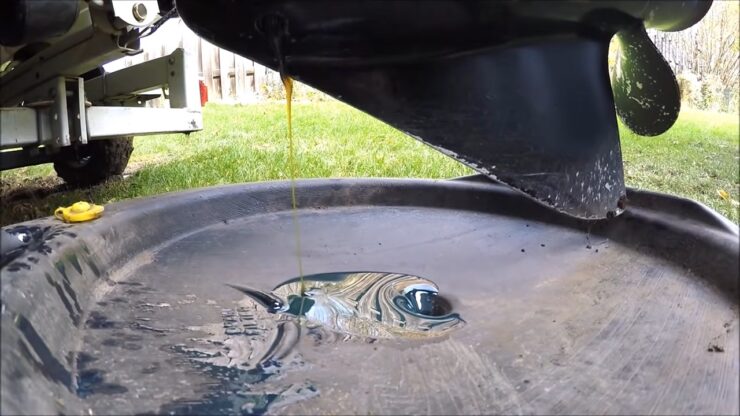
MerCruiser Alpha One Lower Unit Gear Oil Changing Procedures
Boat owners should inspect their lower unit gear case oil regularly. It’s often recommended in the manufacturer’s service manuals. Your lower unit’s oil may be properly maintained by following this simple 8-step procedure.
Step 1: Adjust Your Engine Position
If your boat is tied or docked, remove it from the water and put it on a trailer. Take it with you so you may use it whenever it’s most convenient.
Make sure the boat trailer’s not sitting on an incline before checking the lower unit gear oil. The surface should be level and flat.
Gear oil level cannot be checked while the engine is trimmed or locked in the vertical position. Adjust your engine position to sit straight up and down.
Step 2: Remove the PlugMake sure the lower unit has a drain pan under it. On the lower unit side case, find the upper vent hole oil plug.
If you’re having difficulties finding it, check your owner’s service manual. The stopper for the lower unit’s vent hole shall be clearly marked.
Locate it at a convenient height on the casing. To remove the plug, twist the screw counterclockwise using a large flat screwdriver.
Step 3: Refill the Oil
After you’ve removed the vent plug, be sure to keep an eye on the vent hole. Oil will drip down to the lower unit case if the level is correct and the hole is open.
After draining all the oil from the lower unit, it is time to refill it. Some of the devices on the market include squeeze bottles and tubes. A squeeze bottle is a common “do-it-yourself” approach.
Lubricants with API GL5 SAE 80 or 90 weight grade designations can be used in that place. Do not combine various brands or weights of oil. Alpha one gen 1 and Alpha 2 gen 2 need the same type of oil.
Insert the bottle/tube into the lower unit to replenish it. A full level indicates that the vent plug can be replaced and tightened with a screwdriver. Put your pinky finger into the vent hole. Pull it out if there is no overflow.
Step 4: Check Water Contamination
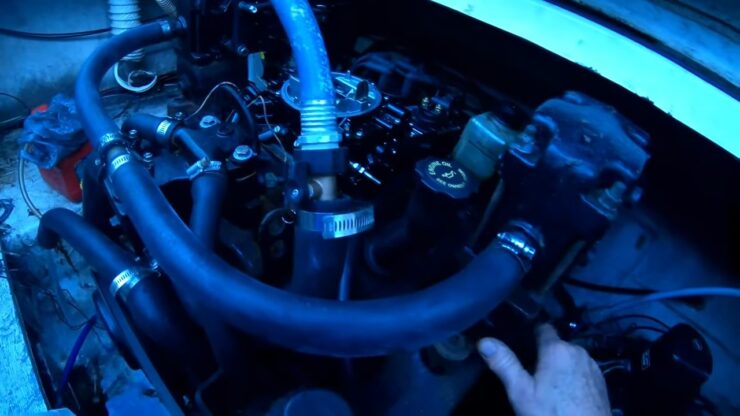
Lubricants should be flowing easily and free of air bubbles when you finish applying oil. Use a piece of scrap paper curved at a 90-degree angle to check for damage.
Check if you have no oil on your finger or no oil underneath the vent hole opening. If yes then you need to apply lower gear case oil.
Check for a brown or cream-like shade and bubbly appearance in full or low oil. The milkshake-like color and fluidity of lower gear case oil is a sign of water contamination. Having water in the oil indicates a poor seal or gasket.
Step 5: Check If There is Any Metal Reflection
Gently rub the oil between your fingertips to feel the grit. Consider whether or not the oil has any metal reflections when viewed in the sunlight.
Metal shavings in the oil are an indication of the presence of metal bearings. Change the oil if any of these signs appear.
Step 6: Reinstall the Bottom Plug
Place the bottom plug (or plugged with your finger) while the top plug is replaced.
While reinstalling the bottom plug, will generate a tiny vacuum.
It will help reduce oil loss. For the betterment of the outboard check your mercury outboard voltage regulator.
Step 7: Insert the Drain Stopper
Once you’ve removed the bottle from the bottom hole, quickly insert the drain stopper. It’s critical that this be completed as rapidly as possible in order to reduce oil leakage.
Oil will still be lost, even when there is a little vacuum. Don’t worry about losing a little oil. But if you lose a lot, you’ll need to add more oil back into your system.
Make sure the lower and top drain plugs are hand-tightened. Clean off any oil from the lower unit.
Warning
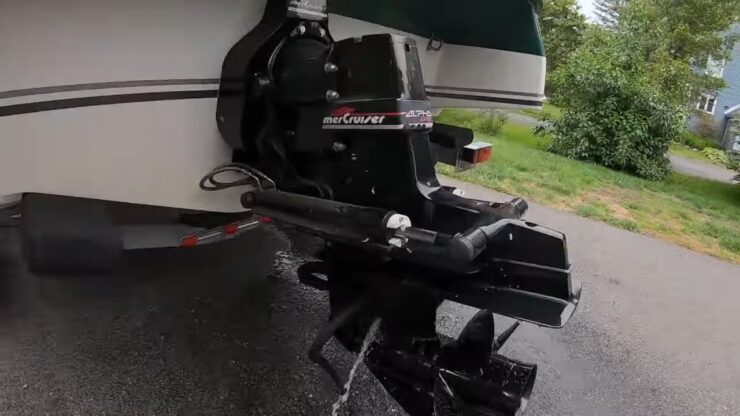
In order to avoid serious damage, do not run your outboard. Unless the lower unit has been entirely filled with oil to the right level. Take your old oil to an oil recycling center to ensure that it is properly disposed of.
FAQs
Here are some frequent queries that are-
1. What is the function of the oil in the lower unit?
The oil in the bottom unit reduces friction and wear on the moving elements. It allows the unit to operate at its peak efficiency. Because the bottom unit operates at such high pressure, the sludge that accumulates in the system is removed. That makes it an excellent internal part cleaner.
2. Are parts from the Alpha One Generation 1 compatible with those from the MerCruiser?
Alpha one generation 1 parts are compatible with Mercruiser. All Mercruiser® Drive series can use the Sterndrive units because they are 100% OEM compatible.
3. When it comes to the lower unit, can I just use ordinary gear oil?
This is the wrong solution if you’re looking for long-term protection and want your bottom unit to serve well. Find the marine gear lubricant that best suits your needs by consulting your engine’s owner’s handbook.
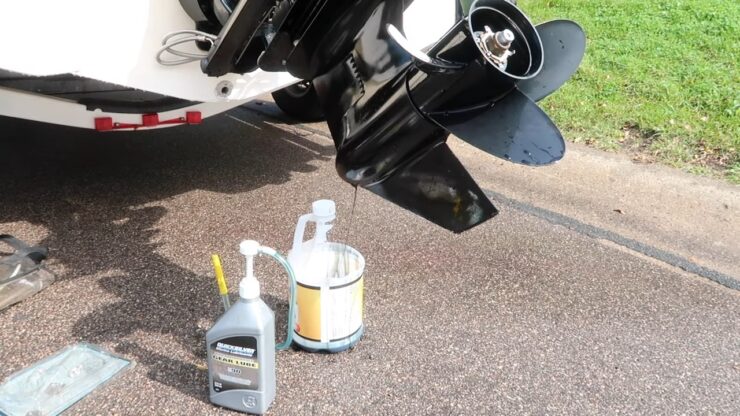
4. How many horsepower is a MerCruiser Alpha One?
The MerCruiser Alpha One is a powerful engine that delivers great performance. It produces up to 260 horsepower and can reach speeds of up to 60 miles per hour. This makes it an excellent choice for those who want a fast and reliable engine for their boat.
5. How many hours do MerCruiser engines last?
The average lifespan of a MerCruiser engine is between 1,500 and 2,000 hours. But that’s just an average – some engines may last much longer and some may not make it to the 1,500-hour mark. The length of time your engine will last depends on many factors, including:
- The way you use your boat
- How do you maintain your engine
- The environment in which you operate
All of these factors can affect how long your MerCruiser engine will last. But there are some general tips that can help extend the life of any engine, including:
- Change the oil and filter regularly
- Keep up with scheduled maintenance
Conclusion
We are clear about your confusion about the Mercruiser alpha one lower unit oil type here. Your engine’s longevity will suffer if you mix oils, so avoid this.
MerCruiser Alpha One motor oil must be added through a plug near the propeller. Pay close attention to everything around you. Take action if you even have the slightest inkling that something is amiss.
I’m Liam Jackson, the proud owner and driving force behind KayakPaddling.net. Born somewhere in the expansive beauty of the United States, I’ve nurtured a lifelong passion for kayaking and fishing that has led me to explore the far corners of our nation’s waterways.
Related Posts:
- Heavy Duty Fishing: 11 Best Rods And Reels For Big Fish 2024
- 17 Best Trolling Reels 2024 - Enjoy your Fishing Adventure
- 15 Best Baitcasting Reel Under $100 2024 - Improve…
- 16 Best Kayak For Beginners 2024 - Kayaking Adventure Gear
- 12 Best Truck Bed Hitch Extenders for Kayak 2024 -…
- 12 Best Fishing Lures Ever 2024 - Baits That…

